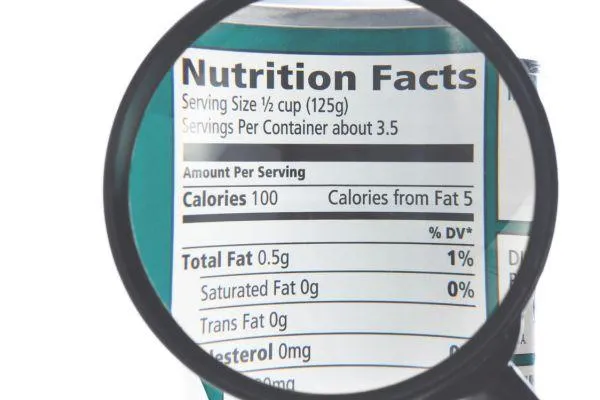
Weight Management Blogs
Embark on a wellness journey with our weight management
blog, your go-to resource for sustainable health and weight loss. Explore
evidence-based tips, and motivational stories to support your path to a
healthier lifestyle. Whether you're seeking weight loss strategies, or mindful
eating advice, our blog is your companion in achieving and maintaining your
goals. Join our community and discover a balanced, empowering approach to
weight management that prioritises your well-being. Start your transformative
journey to a healthier, happier you today.

Decoding Food Labels: Your Roadmap to Weight Loss Success
"Food labels are like road signs on this path, offering valuable information that can guide your choices and steer you towards healthier options."
Introduction:
In the journey towards weight management, understanding what goes into your body is paramount. Food labels are like road signs on this path, offering valuable information that can guide your choices and steer you towards healthier options. However, navigating these labels can sometimes feel like deciphering a complex code. But fear not! With a bit of knowledge and guidance, you can become a master at interpreting food labels and making informed decisions that support your weight loss goals.

1. Serving Size Matters
The first step in reading a food label is to check the serving size. This is crucial because all the information listed on the label, including calories and nutrients, is based on this serving size. Pay attention to portion sizes and be mindful of how they align with your dietary needs and goals.
2. Keep an Eye on Calories
Calories provide energy, but consuming too many can hinder weight loss efforts. Look at the calorie count per serving and assess whether it fits into your daily calorie intake goals. Remember, it's not just about the total calories but also where those calories are coming from.
3. Understand the Macronutrients
Macronutrients—carbohydrates, protein, and fat—play different roles in your diet and impact your weight management journey differently.
Carbohydrates: Keep an eye on the type of carbohydrates listed, focusing on complex carbs (whole grains, fruits, vegetables) over simple carbs (sugars, refined grains).
Protein: Protein helps keep you feeling full and satisfied. Opt for lean protein sources such as poultry, fish, tofu, or legumes.
Fat: Not all fats are created equal. Look for products with healthy fats like monounsaturated and polyunsaturated fats, found in foods like nuts, seeds, avocados, and olive oil.
4. Beware of Added Sugars and Sodium
Excess sugar and sodium intake can sabotage your weight loss efforts and negatively impact your health. Check the ingredient list for added sugars (look for words like sucrose, high fructose corn syrup, or syrups) and aim to minimise them. Similarly, keep an eye on sodium content, as high levels can lead to water retention and bloating.
5. Fibre is Your Friend
Fibre not only aids in digestion but also helps you feel full for longer periods, preventing overeating. Look for foods high in fibre and aim to incorporate them into your meals and snacks.
6. Ingredients List
While the nutrition facts panel provides valuable information, don't overlook the ingredients list. Ingredients are listed in descending order by weight, so the first few ingredients are the most abundant. Choose products with shorter ingredient lists and recognisable, whole-food ingredients.
7. Watch Out for Sneaky Marketing Tactics
Food labels can sometimes be misleading, with terms like "low-fat," "all-natural," or "organic" plastered across packaging. Remember to read beyond the marketing claims and delve into the actual nutritional information to make informed choices.
8. Utilise Technology
In the digital age, there are plenty of apps and online resources that can simplify the process of deciphering food labels. Consider using apps that allow you to scan barcodes and instantly view nutritional information and ingredient lists.
Conclusion:
By mastering the art of reading food labels, you empower yourself to make healthier choices that support your weight loss goals. Remember, it's not about depriving yourself but rather about making conscious decisions that nourish your body and mind. So, the next time you're at the grocery store, take a moment to examine those food labels—it could be the key to unlocking your path to weight loss success.
If you would like to explore how to better your health and achieve sustainable weight loss, we'd love for you to check out our Choose Trim Choose Healthy Hub, a revolutionary weight loss membership program designed to empower individuals like you on their journey to optimal health and well-being. This unique membership program combines weekly coaching sessions, unlimited support, and a community of like-minded individuals committed to achieving their wellness goals.
You can find out more about it here: https://robynratcliff.com/choosetrim

